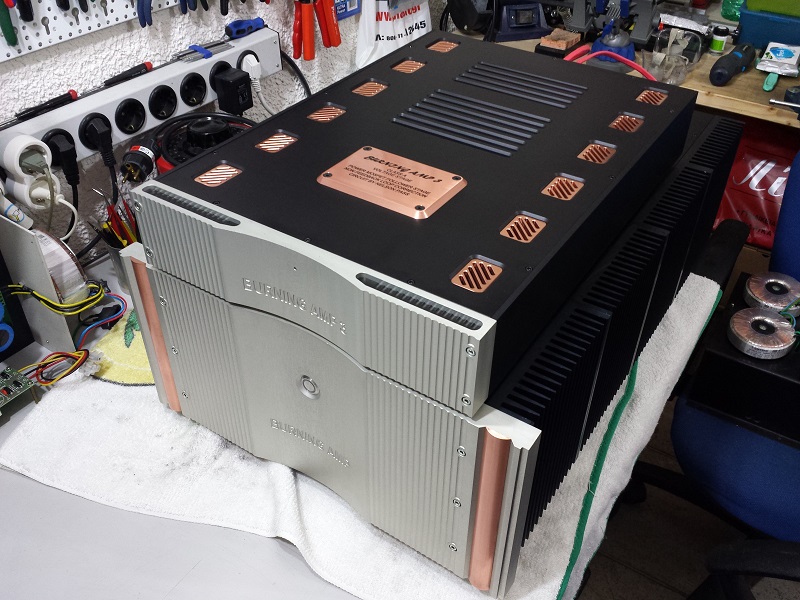Nelson thanks !!!!!! for giving this excellent Amp to the DIY community.
Specs:
Dual mono implementation.
Two cases one for the front End (BA-3 gain stage) and one for the complimentary final stage.
Front End
BA-3 in cascode mode powered by Salas Shunt Regs at 55 V.
Final Stage
CLC Power supply.
Transformer 1500 VA - 328,000μf - per channel at 55 Volts.
12 Mosfets per channel.
Bias 300mA per Mosfet.
Amp weight 78 kg.
Dims: 430 x 200 x 700 mm.
WOW....really inspiring work....
Congratulations ....amazing ....the amount of thought and planning is evident.....just WOW😀
Nikos:
That is insane. Where is the output cap on the ba3 front end? Is that a servo replacing the cap?
That is insane. Where is the output cap on the ba3 front end? Is that a servo replacing the cap?
That is a magnificent amplifier build. That front panel treatment carried over to the smaller front end case really makes it come together. I hope you enjoy listening to this build.
Nelson thanks !!!!!! for giving this excellent Amp to the DIY community.
Specs:
Dual mono implementation.
Two cases one for the front End (BA-3 gain stage) and one for the complimentary final stage.
Front End
BA-3 in cascode mode powered by Salas Shunt Regs at 55 V.
Final Stage
CLC Power supply.
Transformer 1500 VA - 328,000μf - per channel at 55 Volts.
12 Mosfets per channel.
Bias 300mA per Mosfet.
Amp weight 78 kg.
Dims: 430 x 200 x 700 mm.
Now that is bloody awesome mate.
I couldn't suggest one thing to improve on that.
Nikos:
That is insane. Where is the output cap on the ba3 front end? Is that a servo replacing the cap?
The two silver cylinders on the back of the ba3 board are the output capacitors. Obligato Gold if I can read correctly.
A few more
Attachments
-
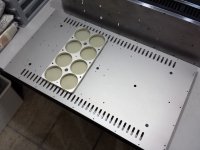 20150719_183745.jpg224.4 KB · Views: 1,329
20150719_183745.jpg224.4 KB · Views: 1,329 -
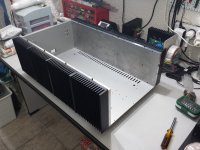 20150704_133855.jpg267.7 KB · Views: 1,317
20150704_133855.jpg267.7 KB · Views: 1,317 -
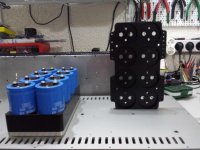 20150719_185129.jpg87.6 KB · Views: 1,347
20150719_185129.jpg87.6 KB · Views: 1,347 -
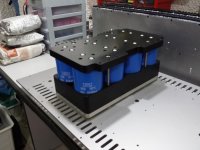 20150719_190309.jpg83.2 KB · Views: 792
20150719_190309.jpg83.2 KB · Views: 792 -
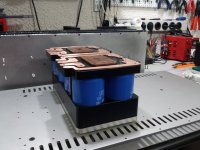 20150719_191317.jpg268 KB · Views: 815
20150719_191317.jpg268 KB · Views: 815 -
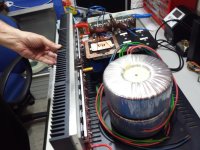 20151121_155429.jpg283.2 KB · Views: 867
20151121_155429.jpg283.2 KB · Views: 867 -
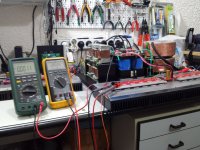 20160124_174731.jpg331.6 KB · Views: 851
20160124_174731.jpg331.6 KB · Views: 851 -
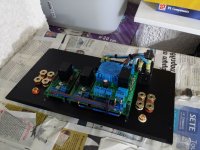 20160124_175344.jpg302.4 KB · Views: 837
20160124_175344.jpg302.4 KB · Views: 837 -
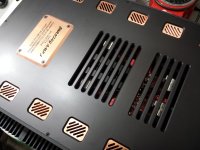 20160510_215657.jpg280 KB · Views: 797
20160510_215657.jpg280 KB · Views: 797
The two silver cylinders on the back of the ba3 board are the output capacitors. Obligato Gold if I can read correctly.
That is Correct
WOW!!! That's one BIIIGG amp!! No need for room heaters in the winter!!
How did you implement the cascode on the front end?
Copy paste from F5T.
What is the estimated power output? (too lazy to do the math 😀 )
A little over 100W.
What speakers will you use it with?
Local Brand (Audio Spectrum Hermes).
Do you have your own CNC machine?
You can say that i have unlimited access to one.
The two silver cylinders on the back of the ba3 board are the output capacitors. Obligato Gold if I can read correctly.
I see them now. The small boards above the front end boards where the caps usually are must be the bias boards. I was hoping for servo. But only because I am interested in servo...it's awesome though.
Last edited:
In this kind of builds you don't ask how much it costs, etc... it simply doesn't matter.
Thanks for you kind words.
Smallest F5 style amp?
Hi
This feels strange to post here after the fabulous extreme built from Nikos but here it is the possible smallest F5 design style amp...it uses an F5 board f rom eBay but with Toshiba output for audio, lower source mosfet resistor values, a bit smaller current in input stage too and a gain of 10 instead of 5. The damping factor is about 30 compared to the original F5 which is about 80 nominally.
Since the very small size (240mm x 250mm x 120mm) it is only 8 Wrms class A and maximum 15Wrms in class AB with 8 ohms. Power supply is double mono , each side having 100VA transformer and 72K uF capacitance.

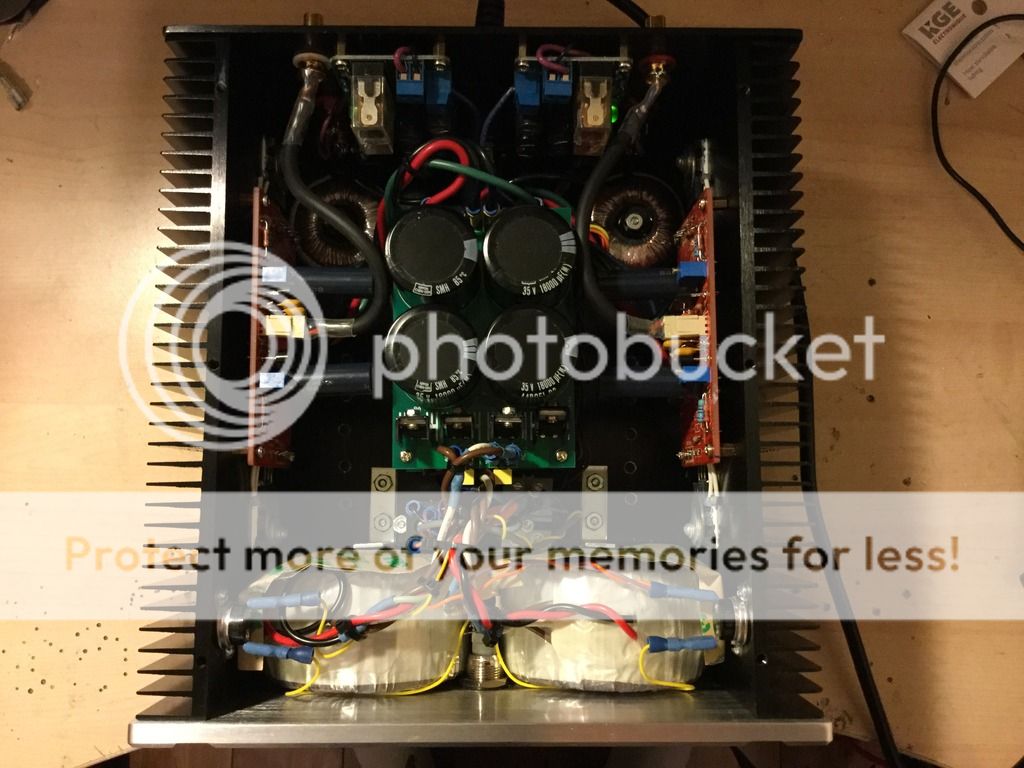
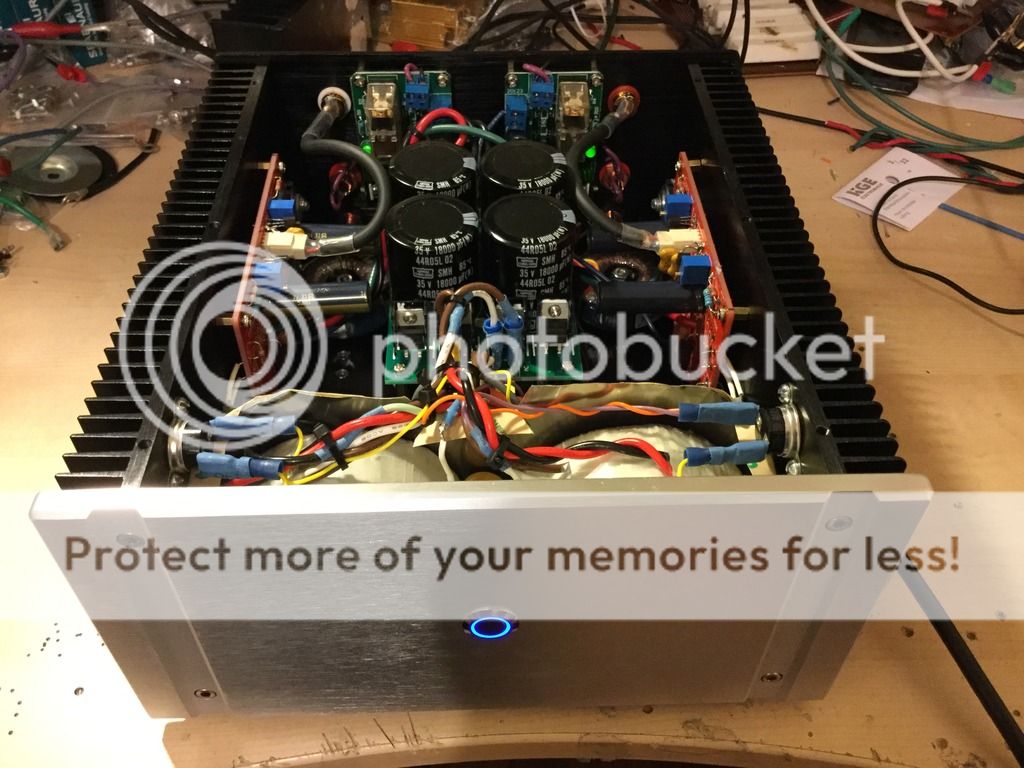
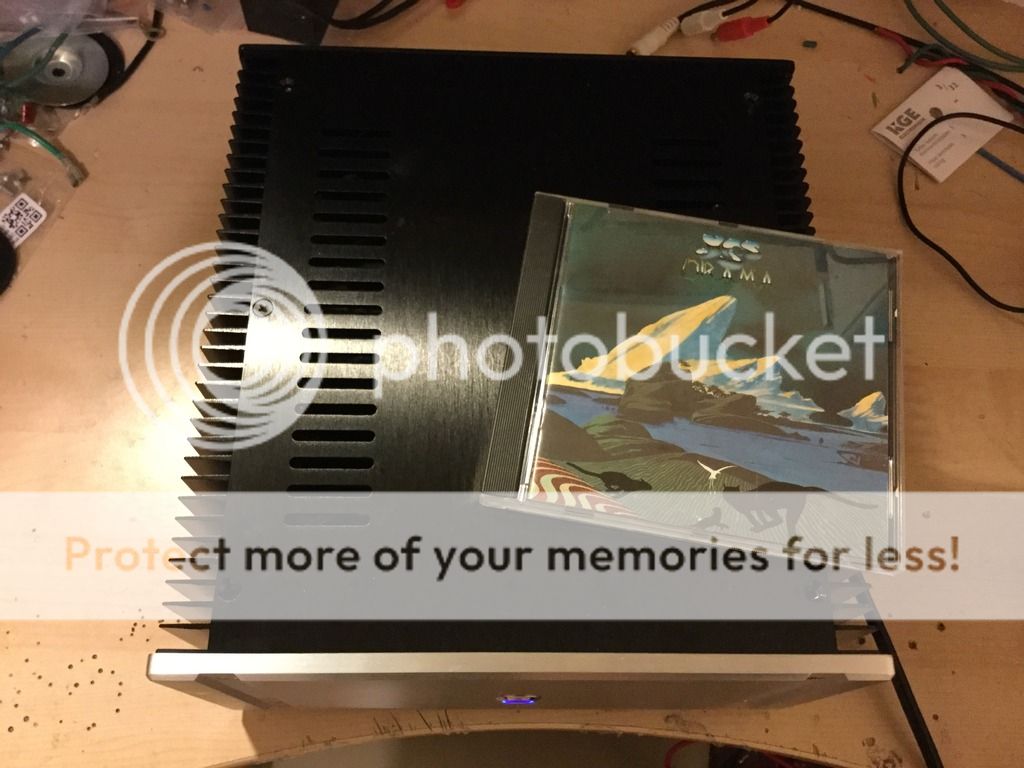
Comparison with another amplifier size...:
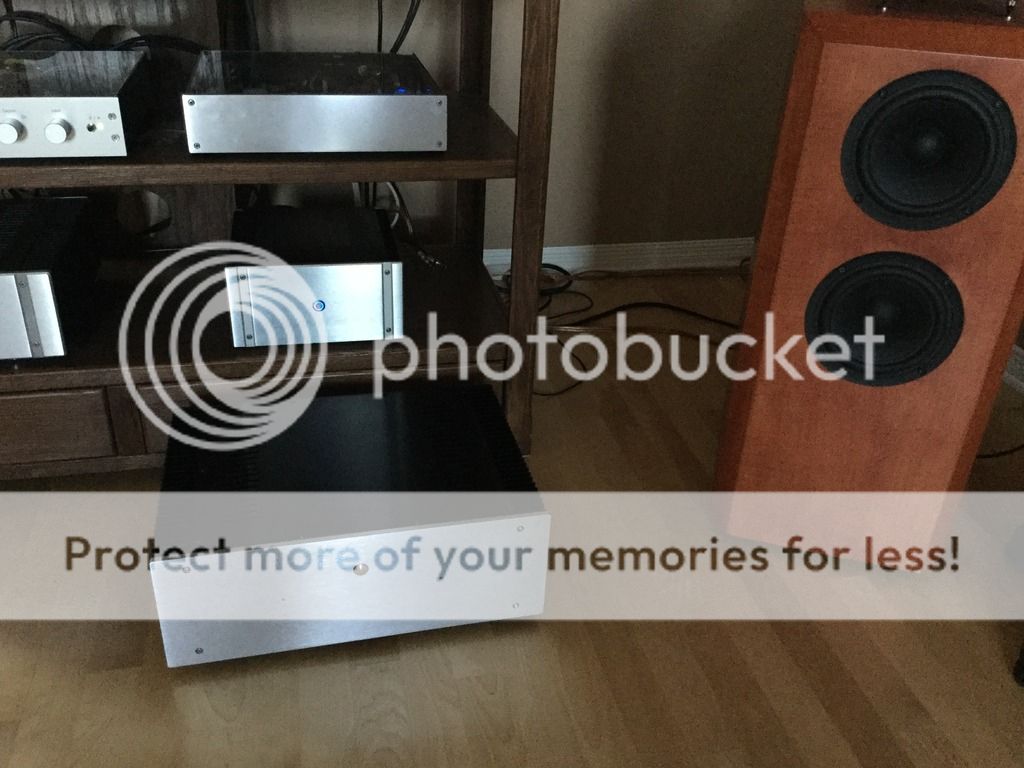
Fab
Hi
This feels strange to post here after the fabulous extreme built from Nikos but here it is the possible smallest F5 design style amp...it uses an F5 board f rom eBay but with Toshiba output for audio, lower source mosfet resistor values, a bit smaller current in input stage too and a gain of 10 instead of 5. The damping factor is about 30 compared to the original F5 which is about 80 nominally.
Since the very small size (240mm x 250mm x 120mm) it is only 8 Wrms class A and maximum 15Wrms in class AB with 8 ohms. Power supply is double mono , each side having 100VA transformer and 72K uF capacitance.




Comparison with another amplifier size...:

Fab
Last edited:
- Home
- Amplifiers
- Pass Labs
- Pictures of your diy Pass amplifier

